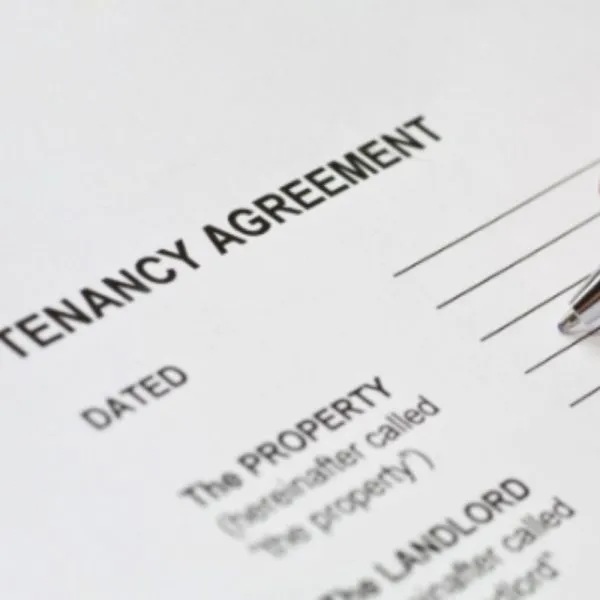Overcrowding in rental properties is a serious issue that affects not only the structural integrity of the property but also tenant safety and legal compliance. Beyond breaching tenancy agreements, overcrowding can lead to accelerated wear and tear, heightened safety risks, and potential legal liabilities. Addressing this issue requires a clear understanding of regulations, open communication with tenants, and proactive property management. This guide offers practical advice on how landlords can manage overcrowding while safeguarding their investments and maintaining positive tenant relationships.
Understanding Overcrowding in Rental Properties
Overcrowding occurs when the number of occupants in a rental property exceeds the limits specified in the tenancy agreement or as defined by local housing regulations. In the UK, the Housing Act 1985 governs overcrowding, using two key criteria: the room standard (the number of people sharing a room) and the space standard (adequate living space based on the number and ages of occupants). Properties that breach these standards may be subject to legal action by local councils.
Key Signs of Overcrowding:
- Excessive noise or complaints from neighbours.
- Unusually high utility usage or waste production.
- Multiple beds or mattresses in inappropriate spaces, such as living rooms.
- Accelerated property deterioration, including damaged fixtures and overworked utilities.
To help landlords better understand overcrowding laws and their implications, Shelter UK provides a detailed guide on housing standards.
Legal Implications for Landlords
Overcrowding is more than just a breach of contract—it can lead to significant legal repercussions. Local authorities have become increasingly proactive in targeting overcrowded rental properties, often imposing fines or improvement orders on landlords who fail to comply with housing regulations. In extreme cases, criminal charges may be pursued.
Key Regulations for Landlords
- Homes (Fitness for Human Habitation) Act 2018: Requires landlords to ensure properties are safe, secure, and free from overcrowding.
- HMO Licensing: Properties that meet the definition of a House in Multiple Occupation (HMO) must comply with specific safety and management standards. Failure to obtain an HMO licence can result in substantial penalties.
For more information on your legal obligations, visit the UK Government’s housing standards page.
Early Detection: Identifying Overcrowding
Detecting overcrowding early can save landlords from significant problems. Regular property inspections are a vital tool in identifying potential issues. During inspections, landlords should look for:
- Evidence of additional tenants not listed in the agreement.
- Rooms being used as makeshift bedrooms.
- Signs of excessive wear and tear in shared spaces.
Conducting regular inspections is not just a best practice; it’s a necessity. Landlords can ensure compliance with tenancy agreements and catch problems before they escalate. If overcrowding is suspected, landlords can act quickly to prevent further breaches of the tenancy agreement.
Communicating with Tenants About Overcrowding
Effective communication is essential when addressing overcrowding. Begin by discussing your concerns with tenants in a respectful and non-confrontational manner. Refer to the tenancy agreement and explain how overcrowding affects the property and your legal obligations as a landlord.
Steps for Successful Communication:
- Schedule a meeting to address the issue in person.
- Provide written copies of the tenancy agreement and explain the relevant terms.
- Discuss the potential consequences of overcrowding, such as fines, eviction, or safety hazards.
To formalise communications, consider using a Notice of Intent service. This document notifies tenants of their breach of agreement and serves as a critical step in legal proceedings if the issue persists.
Legal Steps to Resolve Overcrowding
When informal communication fails, landlords must take formal steps to resolve overcrowding. This typically involves serving a formal notice to the tenant, notifying them of the breach and requesting compliance.
Types of Notices for Overcrowding
- Section 8 Notice: Commonly used for breaches of tenancy agreements, such as exceeding occupancy limits. Learn more about how to serve a Section 8 Notice.
- 14-Day Abandonment Notice: Useful when tenants have left the property in an overcrowded or unsafe condition.
- High Court Sheriff Enforcement: If tenants fail to vacate after receiving an eviction order, this service ensures legal enforcement. Visit High Court Sheriff Services for details.
- County Court Bailiff: When eviction escalates, County Court Bailiffs can assist with regaining possession of your property.
Landlords must strictly adhere to these processes to avoid accusations of harassment or illegal eviction.
Preventing Overcrowding: Proactive Measures
The best way to manage overcrowding is to prevent it from happening in the first place. Proactive property management practices can significantly reduce the risk of overcrowding and ensure tenants adhere to their agreements.
Strategies for Prevention:
- Clear Tenancy Agreements: Clearly define occupancy limits in the agreement and ensure tenants understand these terms before signing.
- Comprehensive Tenant Screening: Conduct background checks to confirm prospective tenants' suitability.
- Regular Property Inspections: Schedule periodic inspections to ensure compliance.
- Tenant Education: Inform tenants about the risks of overcrowding and its legal implications.
To streamline inspections and tenant communication, consider using professional property management services. Helpland offers expert solutions for landlords, including assistance with tenancy agreement enforcement and legal compliance.
The Broader Impact of Overcrowding
Overcrowding doesn’t just affect landlords; it has far-reaching implications for communities. Studies have shown that overcrowded living conditions contribute to:
- Increased risks of accidents, such as fires.
- Poor mental and physical health outcomes for tenants.
- Strain on local services, such as waste collection and emergency services.
By addressing overcrowding promptly and effectively, landlords can protect their properties and contribute to safer, healthier communities.
Seeking Professional Assistance
Professional assistance can provide invaluable support, helping landlords manage challenging tenant situations while ensuring legal compliance and protecting property investments. Services like Helpland specialise in resolving such issues by offering expertise in drafting and enforcing tenancy agreements, communicating with tenants about breaches, and navigating the legal eviction process, including serving notices and obtaining possession orders.
Overcrowding is a multifaceted issue that requires a proactive and informed approach to safeguard property integrity and comply with housing standards. If you’re facing these challenges, Helpland’s expert team can provide tailored solutions to address overcrowding effectively and ethically. Contact us today to learn how we can assist you.





